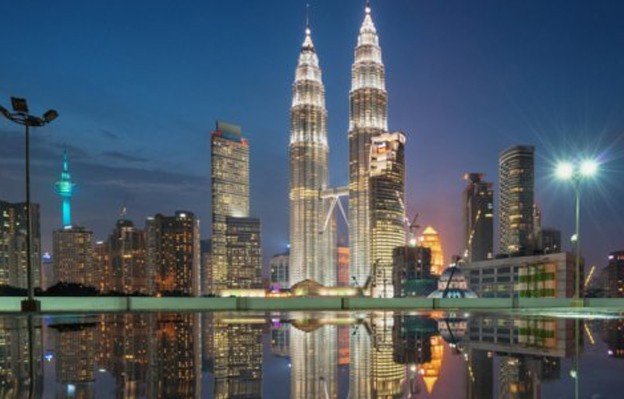Almost every nation has been hit hard because of COVID-19, but the timing and degree of disruption are somewhat different. All the countries have responded differently to this virus, and this is how the success rate differs. The large and developed countries have got more resources and infrastructure, and even though pandemic has hit them, they are now providing a tangible way towards recovery. The lesser developed countries like Indonesia, Malaysia, Philippines, Thailand; Vietnam had to go through many challenges during this time. The ASEAN countries are going through many challenges, and keeping up with the economy has to be dealt with a lot of effort. The stakeholders have to be prepared to take care of the economy. Focusing on manufacturing hubs, green infrastructure, and digital marketing investments could speed up the economy.
COVID-19’s impact on lives and livelihoods
The pandemic hit ASEAN is suffering a lot as the livelihoods of many people are in for a toss. They have recorded a low transmission level, and fatality rates per capita are also lower than in other countries. The transmitted cases in August 2020 have hit 582 across all the ASEAN countries, but the numbers of patients have been much higher in the USA, especially Latin America. The fatality of the virus is a lot lesser in these countries, and many people could live a safe life. The large populations of these countries cannot take the pandemic’s blow, and the leaders are now looking at the road to recovery.
They can let their economy grow by looking at some good ideas and strategies. Lockdowns have also been a cause of concern for many and initial measures to slow down the virus have become fruitful. Several emerging ASEAN countries could see even a broader and more drastic slowdown. The list includes all the countries like Thailand (-13 percent), Malaysia (-13.5 percent), and the Philippines (-13.6 percent). Indonesia’s economy is a little better than the rest, but it could also see a decline of -10.3 percent. All these countries are estimated to record growth in the annual GDP, which is a little slower than the 2008 Global financial crisis.
Five growth levers for emerging ASEAN to consider
The wave of coronavirus has accelerated five levers in the region of ASEAN. The policymakers have shifted their efforts in speeding up the economy and regaining it with full swing. All these trends will turn out to be fruitful for the growth in the upcoming years:
Advancing as manufacturing hubs
Trade among these countries was increasing even before COVID-19 came into the picture. The intra-Asia business has shown interesting statistics over the years. The global growth trade is 2.8 times lower than in other countries. The demand for consumption in ASEAN countries is rising, and China is mainly exporting their materials. The kind of production they have is a lot higher than others, and they are making use of ASEAN countries by handling the trades successfully. The global executives are trying to enter the Intra-Asia deals, which is why these countries’ trade options may slow down. Eighty percent of the USA executives plan to take over Asia, so the ASEAN countries have to focus on other methods. Several Asian countries have prepared the following strategies:
- Thailand is now planning to end
- hence their electric vehicle hub, and the government organizations are working hard towards this goal
- Malaysia has built up 4.3 gigawatts of solar cell module, and the manufacturing capacity has increased by a large margin
- Vietnam has now become a popular destination for purchasing electronic goods. There are companies like Google and LG supporting their Smartphone endeavors
Investing in necessary and green infrastructure
The green infrastructure is on the rise, but it has become more in demand during the last few months. The actions from the climate have become critical, so plans have to be made accordingly. Efforts are being made to lower carbon use, and renewable energy has already emerged in China and other big countries. As pandemic has hit every country’s economy, they are concentrating on investing in primary and green infrastructure to create better job opportunities for people. It will give rise to clean transportation and energy, and the goal of lowering carbon use will become even higher by 2050.
China has already announced its plans to acquire a $500 billion investment for green infrastructure, and electric vehicle charging stations are a part of it. In Indonesia, 46 percent of people don’t have internet access, and many don’t have access to clean water. The policymakers are working hard to provide these necessities to people before moving on to attaining green infrastructure. Renewable energy and efficient technologies will help build up a better economy ad such technologies can increase job opportunities by three times more. The investment in fossil fuels can also turn out to be a good option and provide job facilities for the workers. Here are some things that Governments are taking care of:
- Climatic changes will be handled in a better way, and resources or infrastructure will be provided to the country
- They will be investing in a large number of sustainability levers
- Financial incentives will be given to consumers and businessmen
- The Government will introduce loans and grants so they can acquire a better infrastructure
- The public sector will accelerate with the energy-efficient solutions
Preparing companies for a digital future
Companies have to prepare themselves for a digital future, and strategies are planned for it. There will be a perfect accommodation for remote workers so the consumers can be served with the best of experiences and facilities. Nowadays, people are flocking towards e-commerce, and due to lockdowns, everyone’s interest in e-commerce has increased even more. In Asia, people are spending a lot on online shopping, even for the essential items. The users online for the purchase of groceries have increased to a new level altogether.
Many customers in South Korea, Japan, and other countries are using online facilities for purchasing food and other products. SME’s also have their significant share in the economy, and they need to work hard to enhance the revenue in the digital markets. The digital adoption to all levels can increase the GDP by one percent in Malaysia, and the technology may add around $2.8 trillion to Indonesia’s economy by 2040. The companies’ digital capabilities will develop to a new level, and all the south Asian countries could build up programs to support SME. The process of the Government will be digitalized so it can be adopted by business and citizens.
Facilitating reskilling and redeployment at scale
For the last few years, different businesses have strived hard to prepare for the impact of automation and digital technologies related to the workforce. The second round of lockdown could be more dangerous for many ASEAN countries, and things don’t look bright for the developed countries. If there are disadvantages on one side, there could be advantages on the other side, that is, the growth of e-commerce. The numbers of jobs in the digital market are increasing, and the health care departments are looking for the same thing.
Many skilled workers are now shifting their focus towards the digital market, and it will help the economy in a lot of ways. The Government should facilitate reskilling and redeployment at scale, and funding support should be given to the job seekers to get good training facilities. The demand and supply have to be matched at regular intervals, and the data should also be checked. The jobs that have disappeared during the virus may not be coming back anytime soon, but new opportunities can be created in the meantime. The countries have to analyze the sources for economic growth and other options.
Building high-value food industries
According to the recent reports, Agriculture covers almost half of the GDP when it comes to ASEAN countries. The statistics show that 12.7 percent in Indonesia, 7.3 percent in Malaysia, 8.8 percent in the Philippines, 8 percent in Thailand, and 14 percent in Vietnam. There are many ways in which the country’s agriculture sector could be enhanced, but the Government has to take care of the infrastructure. The high level of productivity will not only increase the economic level but offer enhanced food security to the people in the country. The pandemic has disrupted the quality, purchase, and production of food. The demand and supply cannot be taken care of, and there have been issues with food exports. Food security issues are also on the rise. The food market of Singapore and Qatar is very much developed, and they are now taking the initiative to help the countries in need. Millions of people cannot afford to buy food, and the rise in unemployment will take a toll on their health. Consumer behavior is constantly changing, and smaller businesses are more at risk. The exit of small firms from the market could bring a threat to their livelihood.
Raise farmers’ productivity to aid competitiveness
Here are some ways in which the Government can help to raise the farmer’s productivity.
- Governments can help to provide new infrastructure and technology to the small business owners.
- Smallholders or businesses lack trained personnel and capital, so it is hard for them to survive a pandemic blow.
- Policymakers can help to increase the capital and make it readily available among smallholders
- The government can provide a lot of technical support and assistance to encourage the deployment of new technology.
Expand the agricultural sector into the downstream parts
The Government can also enhance or expand the agriculture sector into different parts of the value chain. The processing, packaging, and retail will give enough value to this sector, and people can benefit from it.
- The demand for packaged food has now increased significantly after the pandemic, and the local industries are now taking charge of this situation.
- The packaged food sales have increased drastically in Thailand and Malaysia, and this sector can be controlled well to enhance the economy.
- The stakeholders are making efforts to attract relevant investors from foreign countries, and it will build up the downstream parts of agriculture.
Analyze the situation and define Upskilling priorities
The digital transformation journey is highly dependent on the Upskilling efforts of an organization. They need to realize what skills are necessary for the organization to run. The technical skills or soft skills will depend highly on the demand and requirements of the organization. The adoption of new technology can be harmful to those individuals who are not ready to go with the flow. All these factors should be kept in mind so diversity can be brought; the particularly post-pandemic situation slows down or is entirely over. To take full advantage of Upskilling, the employees shouldn’t wholly depend on the organization.
The business leaders have to focus on their game while the employees can lookout to create a better opportunity. The employees can work harder to gain knowledge about the online sources to earn their livelihood to increase their making and contribute to the economy. They can also look for funding schemes and learning different levels of new technology. The training sessions can again turn out to help the new employees, especially if they are thinking about raising their bars. The digital HR tools will help the organization determine how much the workforce is interested in learning. The informal meetings on the online platform will help them exchange ideas with each other.
Conclusion
The story of COVID-19 is the story of many lives and how they take care of their livelihoods. Till now, many countries in South East Asia have managed to limit the infections and cases of the virus. The next step will be to enhance the economy as it has gone through many losses over this period. Economic recovery is possible if they can identify and activate the right levers. The policymakers and Governments have to play an instrumental role in this situation. There should be a high level of investments for creating job opportunities among people.









